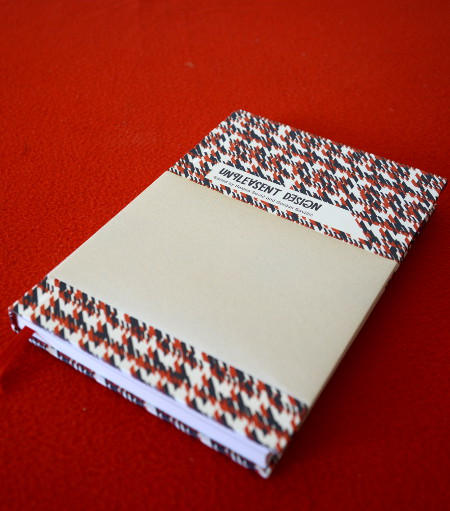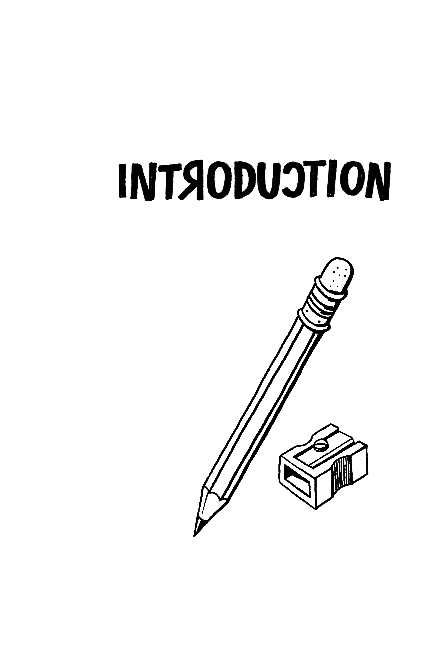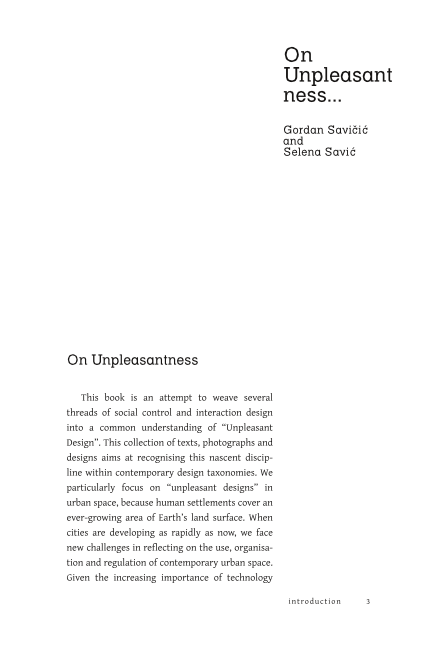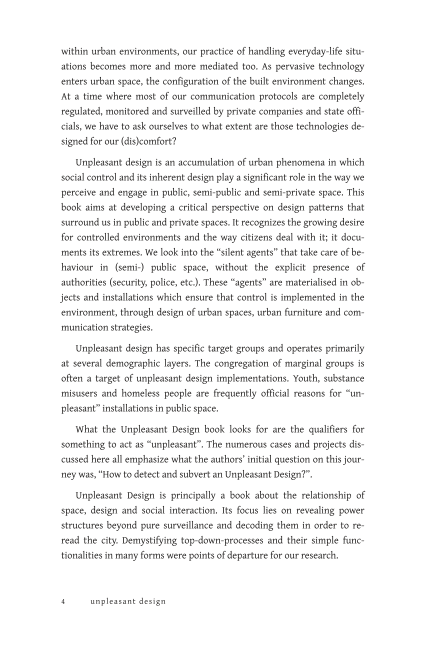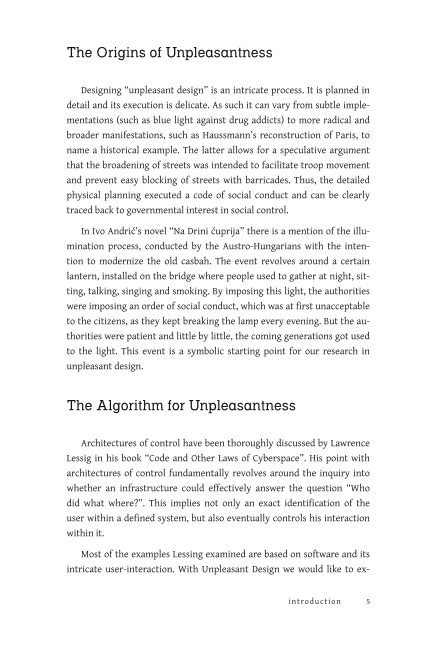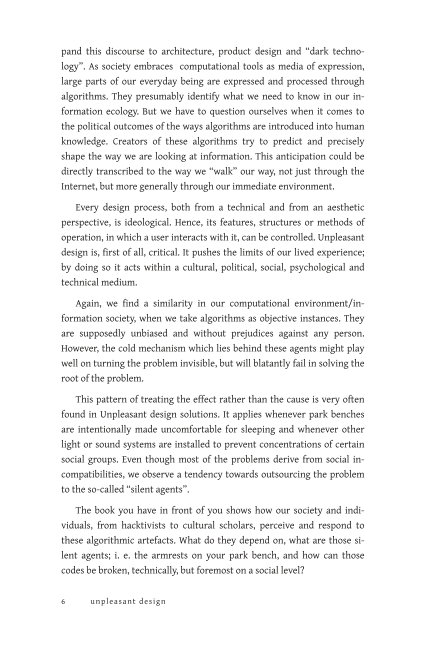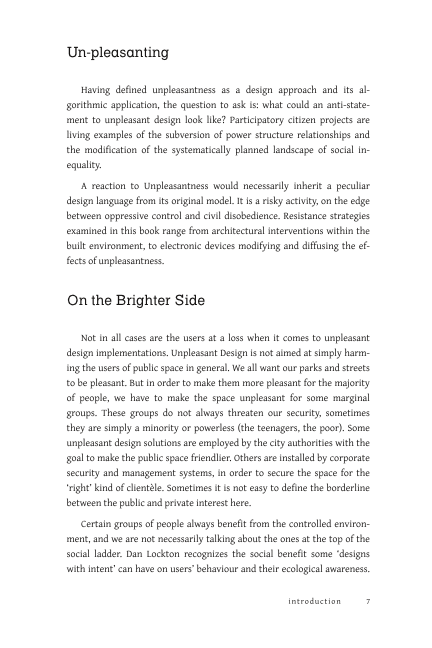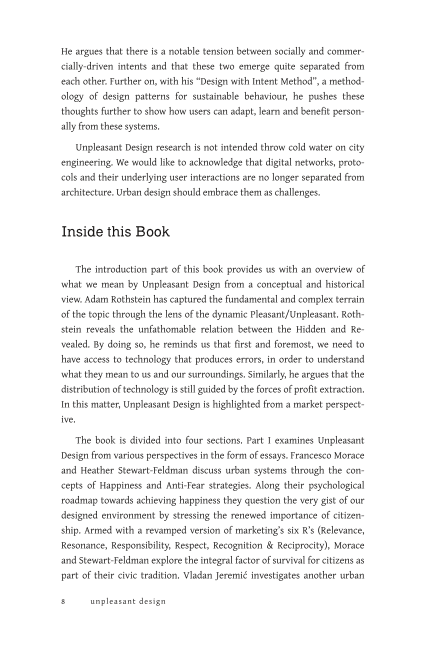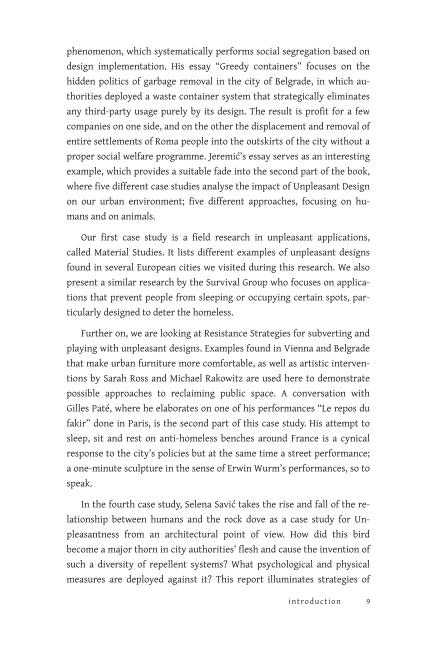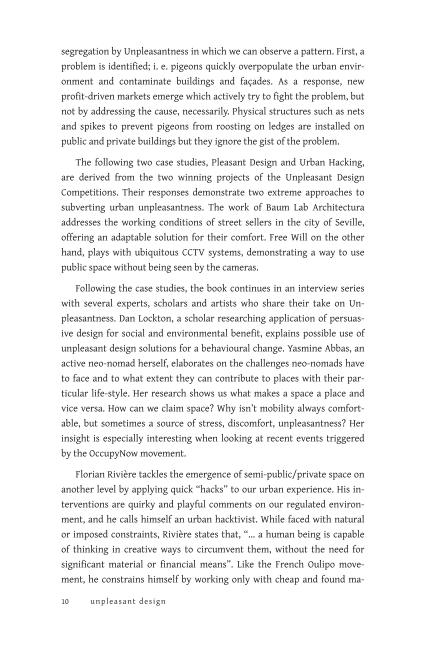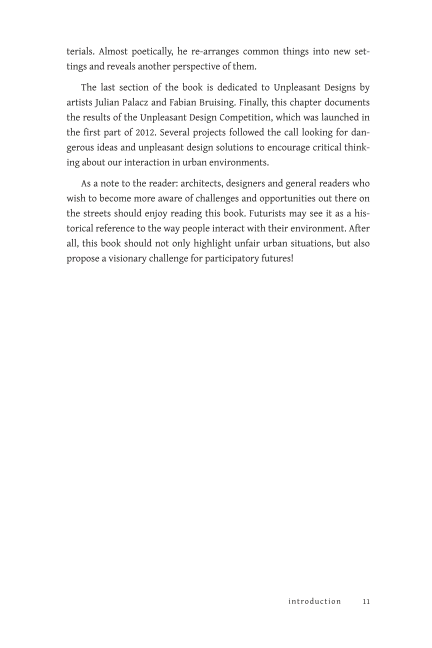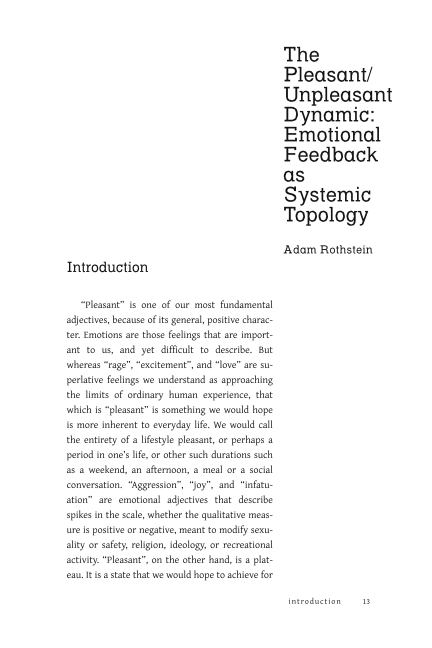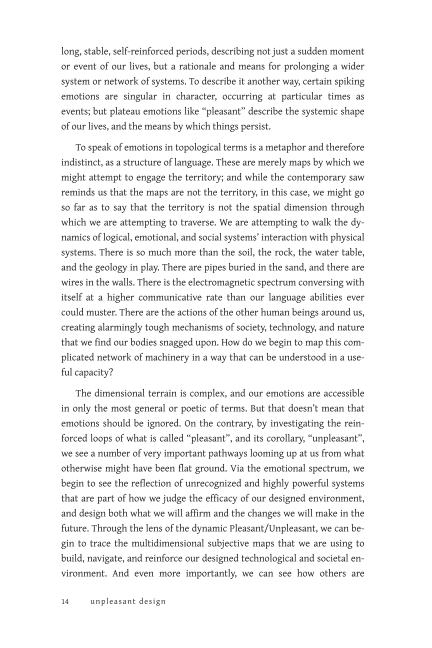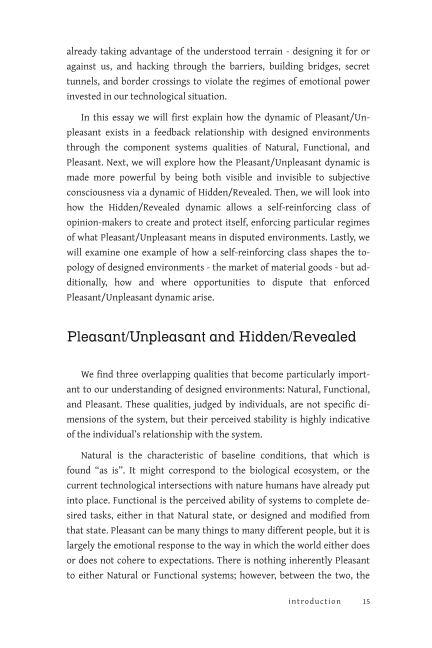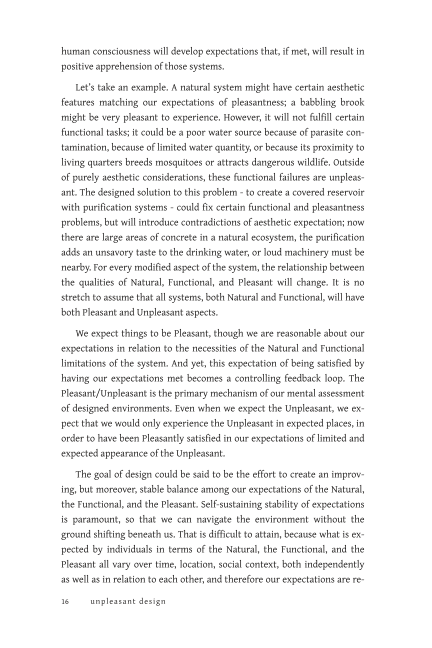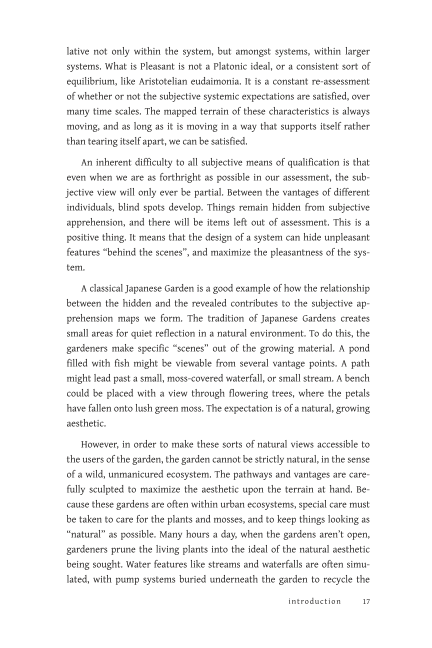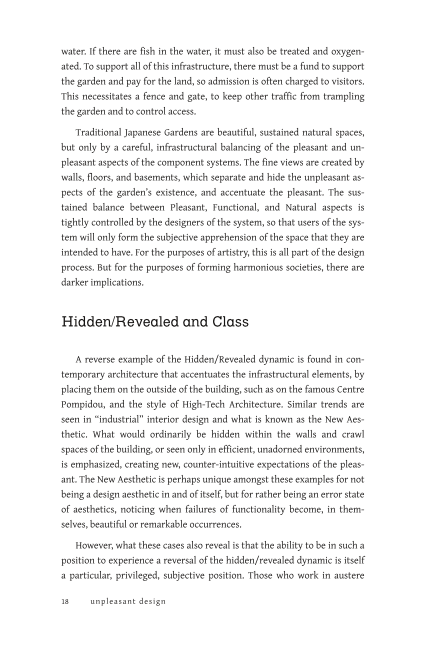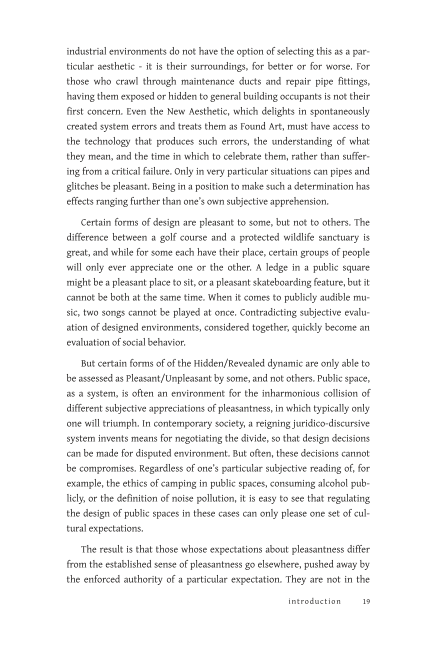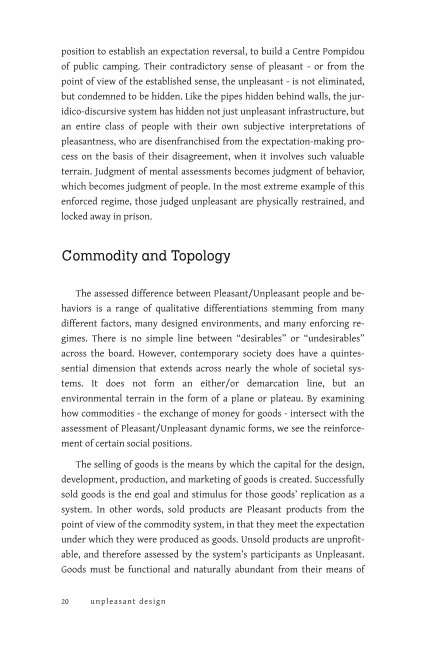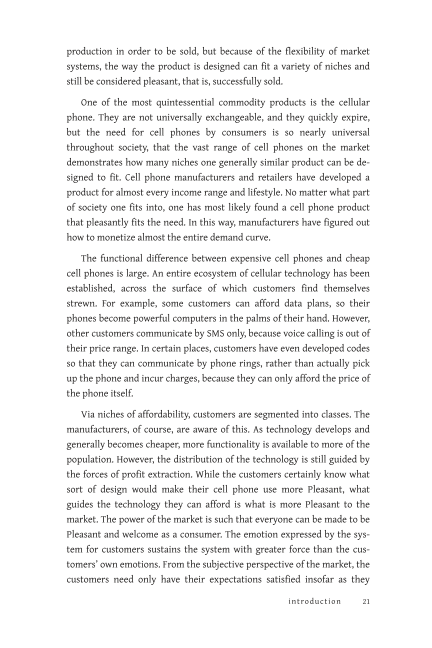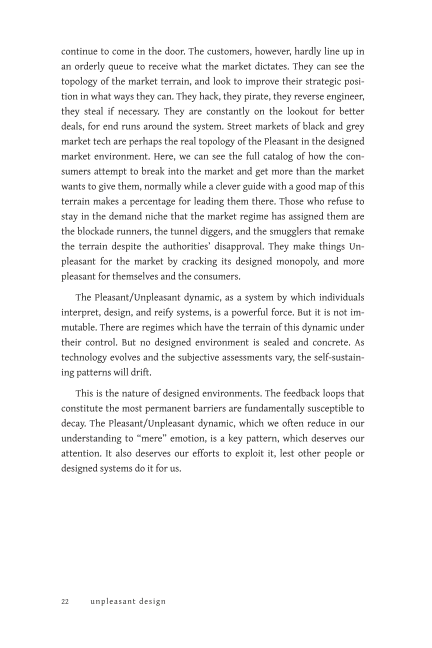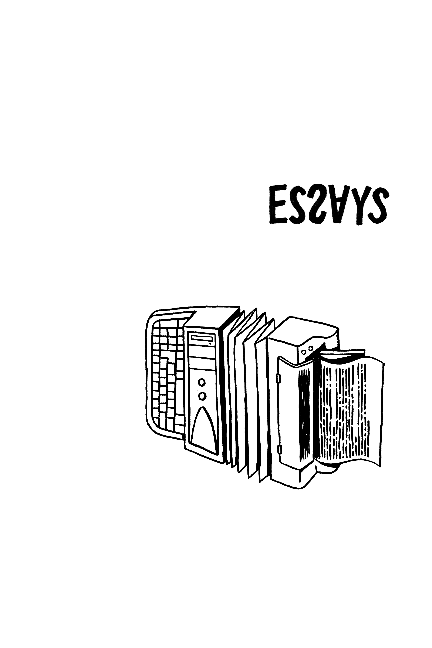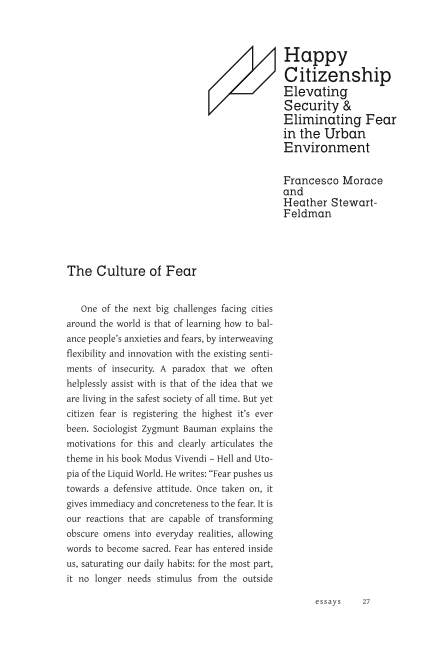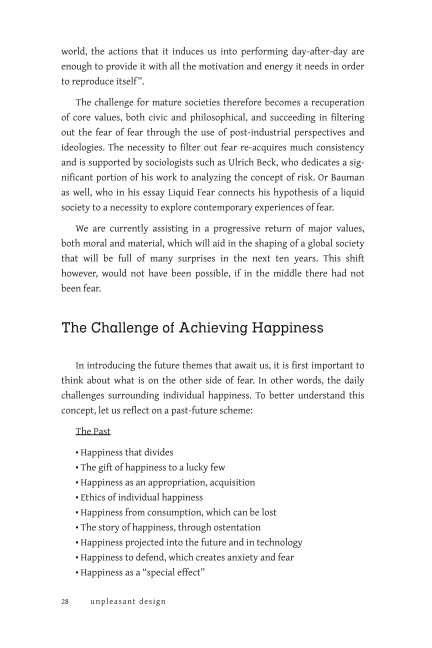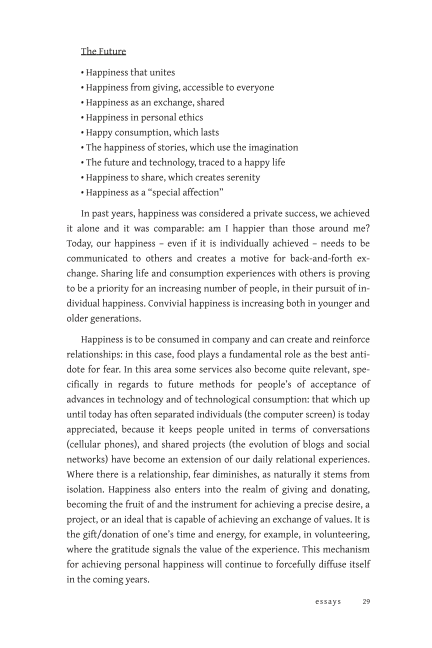un·pleas·ant Adjective /ˌənˈplezənt/
towards a definition
Unpleasant design is an accumulation of urban phenomena in which social control and its inherent design are playing a significant role in the way we perceive and engage in public, semi-public and semi-private space. This page aggregates appearances of urban design processes and tools aimed specifically at people to make them feel uncomfortable or interfere with their general behaviour within certain frameworks; hence its research title “unpleasant design”. These implementations range from architectural interventions within the built environment, to electronic devices modifying and diffusing our lived environment. Our claim is that designing “unpleasant design” is an intricate process. It is planned in detail and its execution is delicate.
As such it can vary from subtle implementations (such as blue light against drug addicts) to more radical and broader manifestations such as the Haussmann’s reconstruction of Paris; to name a historical example. The latter allows for a speculative argument that the broadening of streets was intended to facilitate troop movement and prevent easy blocking of streets with barricades. Thus, the detailed physical planning is executing a code of social conduct and can be clearly traced back to governmental involvement. UP design has specific target groups and is acting foremost at several demographic layers. The congregation of marginal groups is often target of unpleasant design implementations. Young, substance misusers and homeless people are frequently official reasons for “unpleasant” installations in public space.
Considering unpleasant design as tools and intervention strategies intended to control social behaviour, its execution is very often neatly designed hence preventing unwanted interactions between the authorities and citizens. Leaving no space for discussion and disobedience, unpleasantly designed objects prevent social disturbance or disorder. Eventually, this leaves enough room for speculation of the effectiveness of unpleasant design implementations. The ideological basis for control is a difficult and complex one. Is it enough to setup uncomfortable park benches which lean forward to prevent homeless people from sleeping? To which point can physical planning be ruled out or circumvented by re-appropriation of its citizens? Are those who intervene public space really producing change or are certain kinds of intervention just pure paranoia spreading and justification of order and control? These questions are the basis of this blog which will attempt to classify these phenomena by collecting photos, thoughts, essays and interviews with artists, designers and urban planners in several cities. As a multi-disciplinary research group we are looking forward to your contribution in form of texts, images and in collaborative writing.
In Ivo Andric’s novel “Na Drini ćuprija” there is a mention of the illumination process, conducted by the Austro-Hungarians with the intention to modernize the old casbah. The event revolves around a certain lantern, installed on the bridge where people used to gather at night, sitting, talking, singing, smoking… By imposing this light, the authorities were imposing an order of social conduct which was at first unacceptable to the citizens, as they kept breaking the lamp every evening. But the authorities were patient and little by little, the coming generations got used to the light.* This event is a symbolic starting point for our research in unpleasant design.
Unpleasant design is a research in agents that take care of behaviour in (semi) public space, without the explicit presence of authorities (security, police etc.). These agents ensure that control is implemented in the environment, through design of urban spaces, urban furniture and communications.
The focus here is not solely on the fact that this socio-spatial control exists, but more on the analysis which are the parties that have most profit from it. As it is often thought that seeing the act of securing a place as unfriendly is simply paranoid, we indent to show that in the majority of cases, it is the corporations and private investors who exercise a revenue from the gentrification and pacification processes, while the authorities are concerned with “antisocial” behaviour.
*Described in “Na Drini ćuprija”, on the page 112, in the edition Logos Art: Agencija Svetionik, Belgrade 2006. Read the excerpt here.
